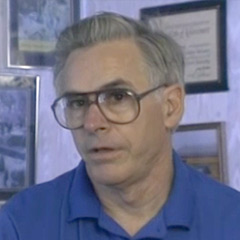
Tips for a Successful Model Train Operations Session
Gil FreitagStony Creek & Western’s Gil Freitag really enjoys model train operations, but used to spend ‘way too much time preparing for an ops session. Now, he’s streamlined the process to just ten minutes, and he shares his tips for model railroad operations with Model Railroad Academy’s Allen Keller in Part 5 of his series on the famed SC&W layout.
As Gil’s layout has expanded in size, operations have become more complex. Where once he had one yard, now he has two. He only used to run a couple of trains out of hidden staging, but now he runs what he calls “sweeper” trains, which, like the Santa Fe prototype, sends trains into a division to pick up cars in a particular yard, stops a few times to pick up cars across the layout, and drops the cut off at the other yard, and returns. That way, he relies on these trains to add 6 or 8 cars at one time to a train, instead of making up an entire 25-car train.
But the first tip, according to Gil, is to operate frequently; he holds an ops session every two weeks. That way, the trains are running frequently (and the track stays cleaner) and he keeps a current list of any faulty switches, equipment or other flaws that need addressing before the next session.
Next, he’s cut down on the preparation time between ops sessions to just 10 minutes! He used to use complex switch lists and card systems, but he’s learned to simplify things now as his layout has grown larger and more complicated.
After each model train operations session, the person who switches a town is responsible for checking the town to make sure the correct cars are there – and makes a list. If he finds a couple of extra cars that don’t belong there, he returns them in his train. If a train that was supposed to return with 10 cars actually has twelve, then they can track down where the problem occurred. That way, each operator is responsible for a list. Still, with such a time-saving method – and computerization – Gil has to track all 350 cars and ensure they’re in the right locations.
As for the stress level of model railroad operations, Gil says – at least for him – it never totally vanishes because he strives for problem-free sessions. He admits that stress in model train operations sessions is just part of the exciting energy of this area of the hobby.

